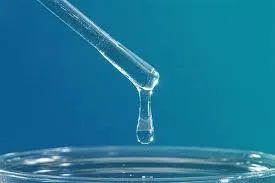
Agu . 30, 2024 21:13 Back to list
hpmc stands for
HPMC, or Hydroxypropyl Methylcellulose, is a versatile and widely used compound in a variety of industries, including pharmaceuticals, food, construction, and personal care. The significance of HPMC lies in its unique properties, such as its ability to form gels, act as a thickening agent, and serve as a binder in formulations. This article delves into what HPMC is, its applications, and its importance across different sectors.
At its core, HPMC is a semi-synthetic polymer derived from cellulose, which is a natural polymer found in plant cell walls. Through a chemical process called etherification, cellulose is modified to produce HPMC, granting it enhanced solubility and compatibility with various other materials. One of the most notable features of HPMC is its ability to dissolve in cold water, forming a gel-like solution that is stable and non-toxic. This property makes it a favored ingredient in many formulations.
.
The food industry also recognizes the value of HPMC. It's frequently found in gluten-free baked goods, where it replaces the structure usually provided by gluten, improving texture and moisture retention. HPMC functions as a thickening agent in sauces, dressings, and dairy products as well. By stabilizing emulsions and foams, it contributes to the overall quality and shelf life of food products. Its vegetarian and vegan-friendly nature further enhances its appeal in modern food formulations.
hpmc stands for

In construction, HPMC serves as an essential additive in dry-mix mortars. It enhances the workability and adhesion of these materials, making them easier to apply and increasing their performance. The water retention properties of HPMC also prevent premature drying of the mortar, ensuring better curing and durability of the finished product. Its role in the construction industry underscores the versatility and multifunctionality of HPMC.
In the personal care sector, HPMC finds applications in cosmetic and skincare products due to its thickening and emulsifying properties. It helps to create smooth, aesthetically pleasing textures in creams and lotions, providing a pleasant application experience. Additionally, its ability to form films makes it a popular choice in hair and skin formulations.
The environmental aspect of HPMC is also worth mentioning. As a cellulose derivative, it is considered biodegradable and environmentally friendly, aligning with the growing trend towards sustainable products across industries. This makes HPMC an attractive option for companies looking to green their supply chains and meet consumer demand for eco-friendly products.
In summary, HPMC stands out as a crucial ingredient in various fields due to its multifunctional properties. Whether in pharmaceuticals, food, construction, or personal care, its ability to enhance performance, stability, and user experience is undeniable. As industries continue to innovate, the relevance of HPMC is likely to grow, solidifying its place as a pivotal compound in modern formulations.
-
Why HPMC is a Key Additive in Wall Putty Formulations
NewsAug.05,2025
-
Redispersible Powder in Decorative Renders: Function Meets Finish
NewsAug.05,2025
-
Redispersible Powder for Interior Wall Putty: Smooth Results Every Time
NewsAug.05,2025
-
HPMC’s Water Retention Capacity in Dry Mortar Applications
NewsAug.05,2025
-
HPMC Factory Contributions to Liquid Detergents
NewsAug.05,2025
-
How HPMC Factory Products Change Detergent Textures
NewsAug.05,2025







